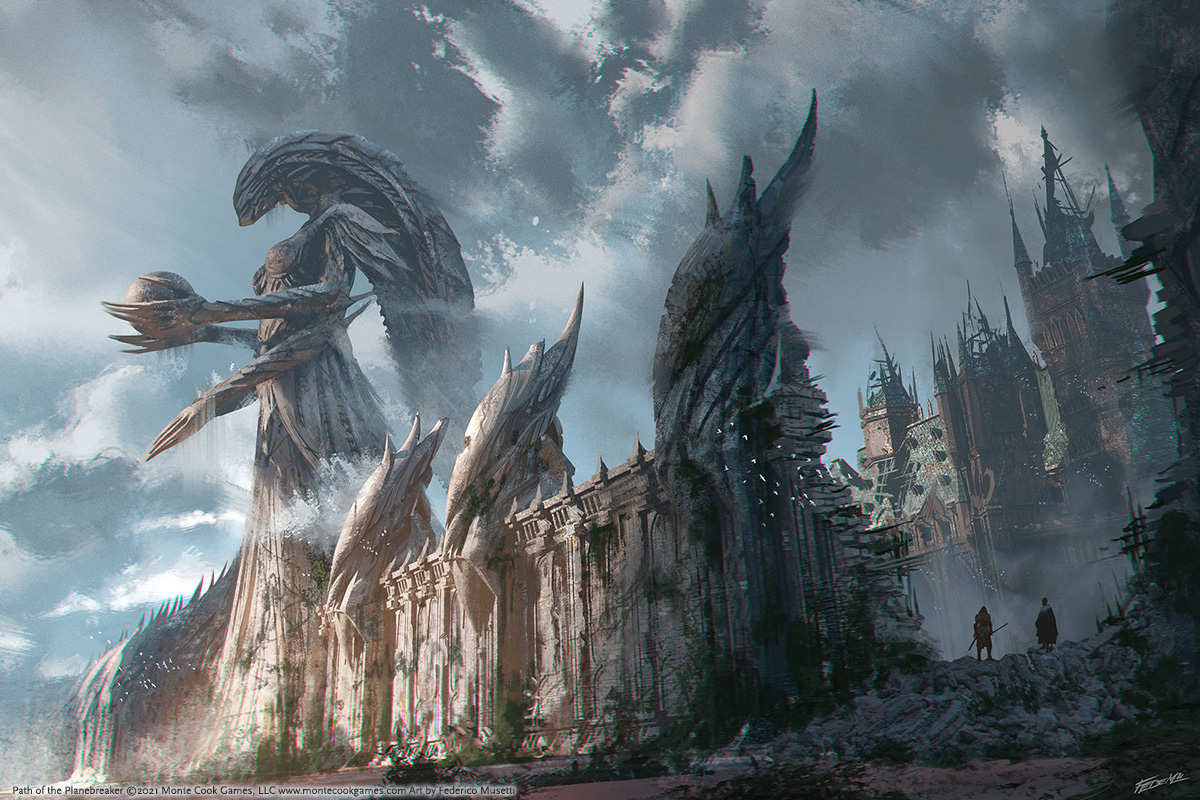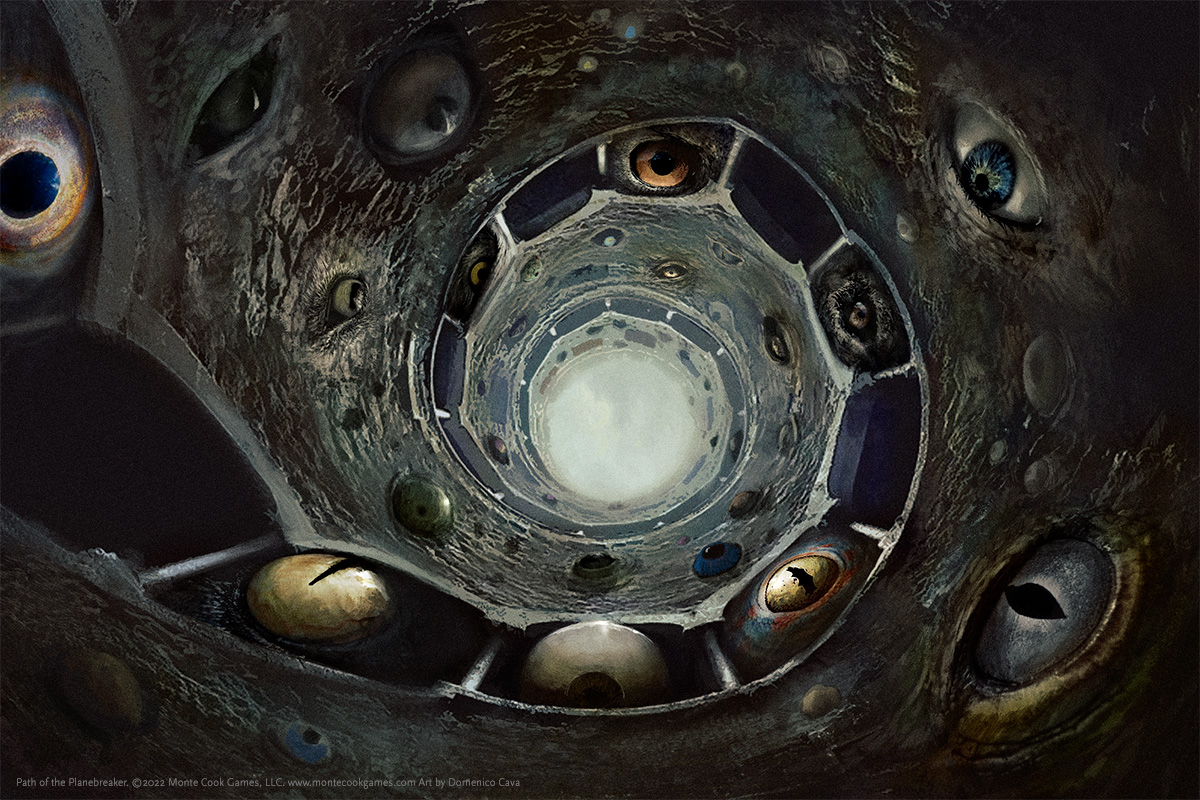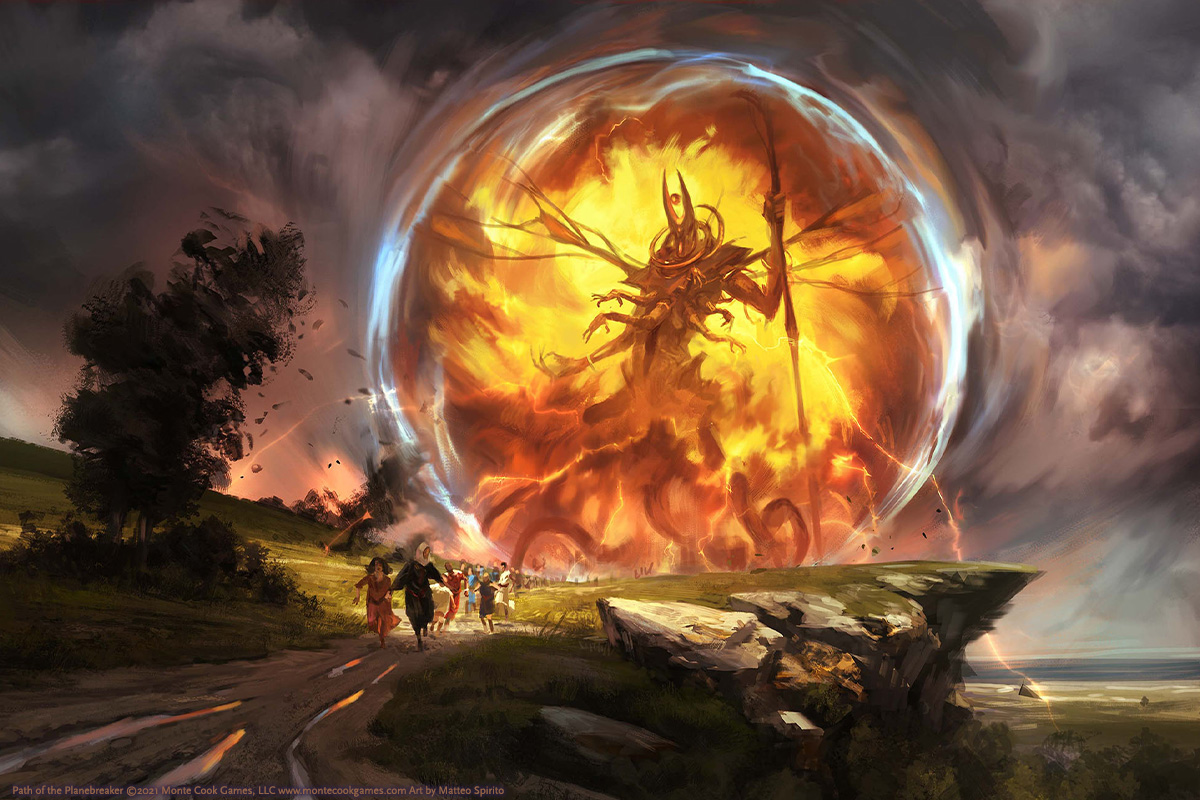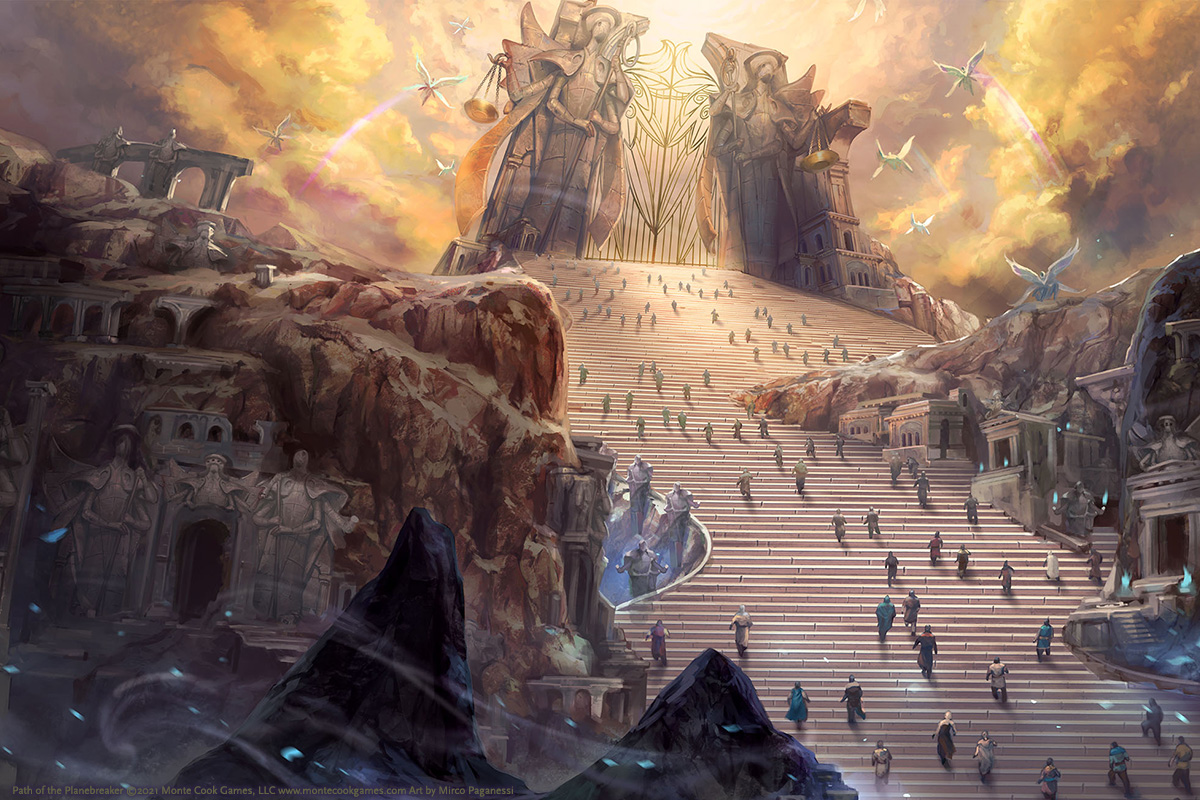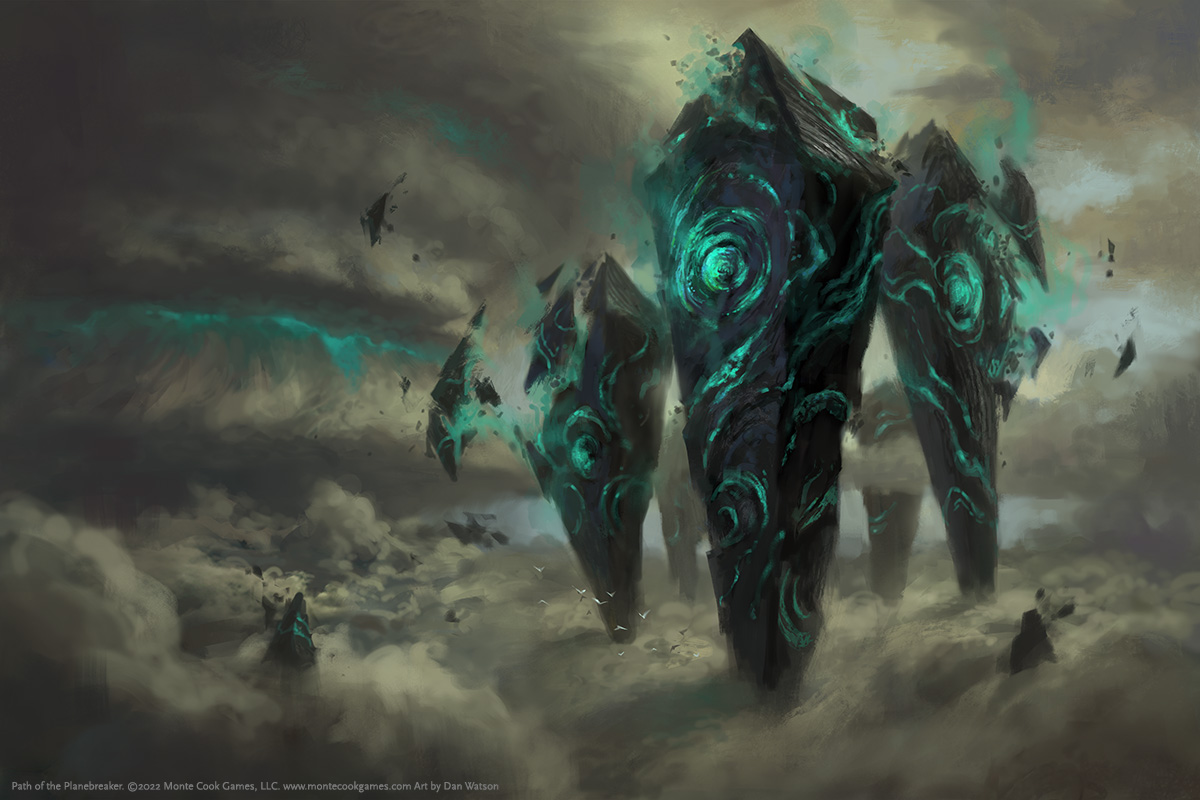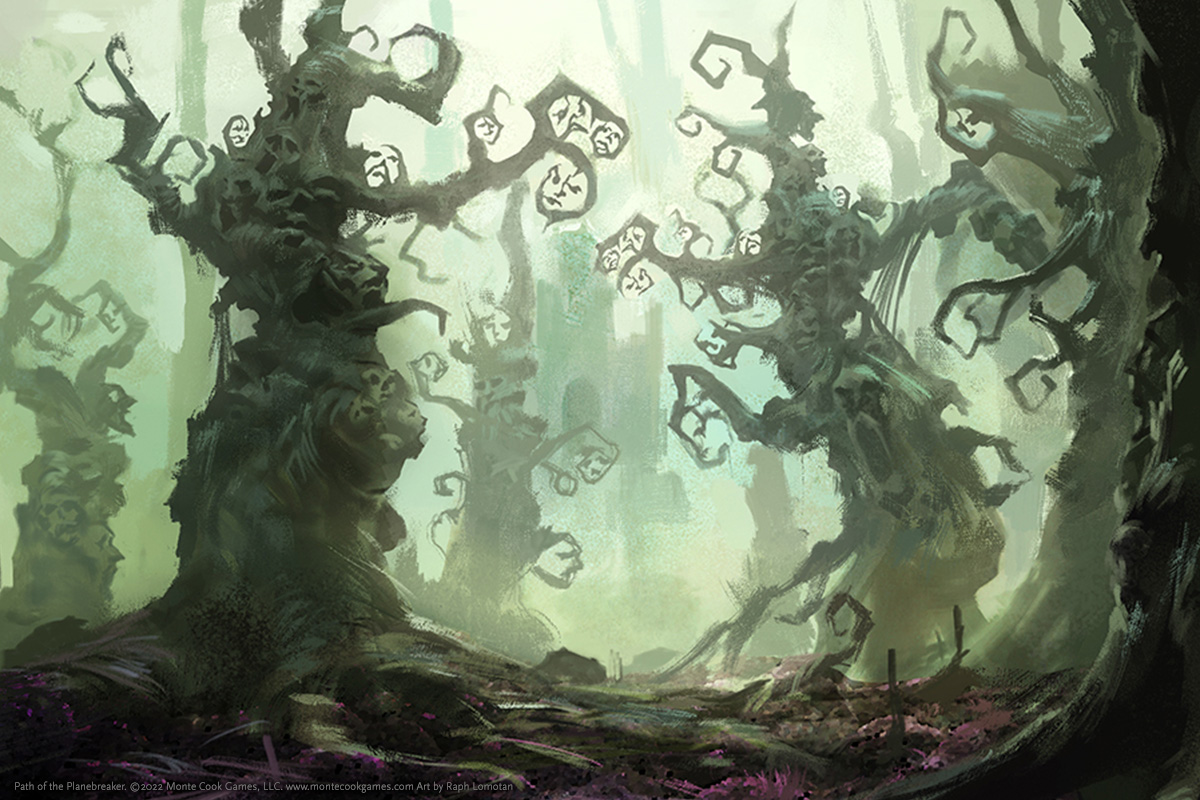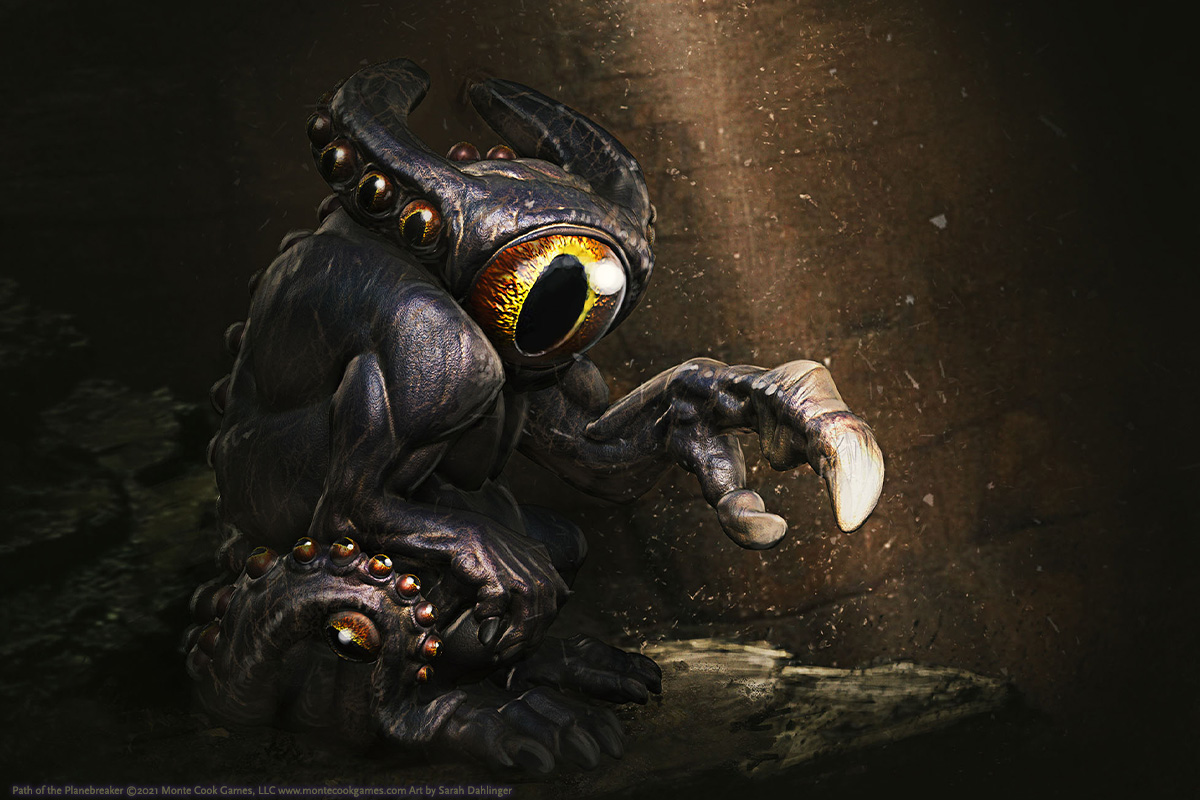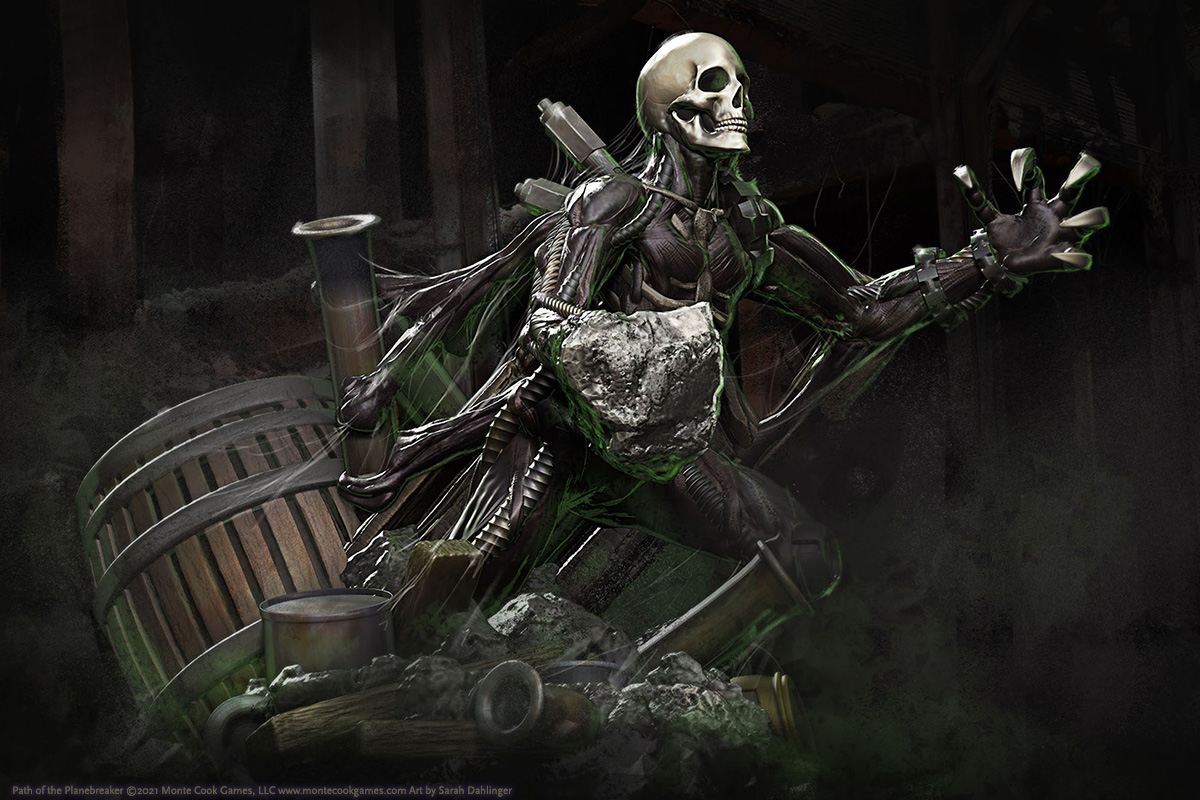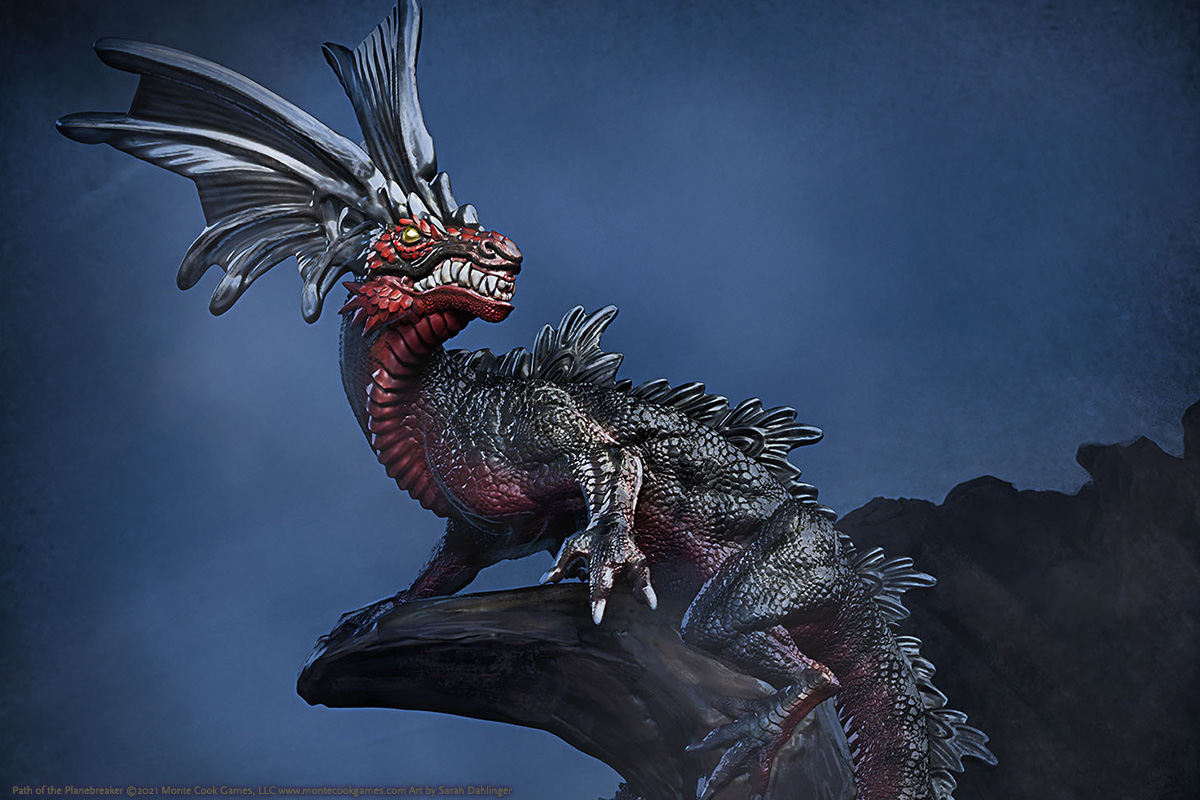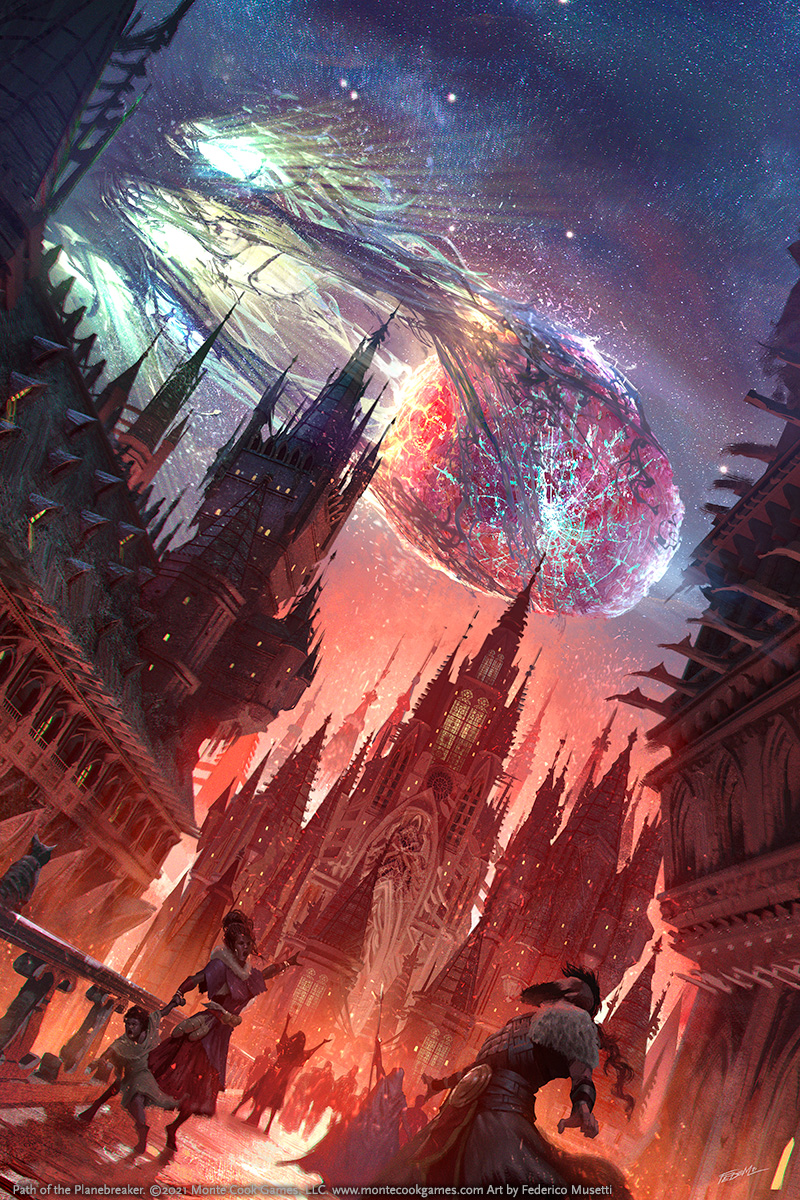
Path of the Planebreaker is a planar sourcebook for players and GMs filled with the wonders, terrors, mysteries, and treasures of dozens and dozens of new alternate worlds, plus the enigmatic Planebreaker—a cursed moon hurtling through the multiverse—and its city of Timeborne. It also includes a bestiary of planar creatures, as well as new subclasses, species, spells, feats, and items. Finally, Path of the Planebreaker includes two adventures that take PCs across the multiverse.
What exactly is the Planebreaker? It’s usually described by its movement, as it crashes from one world to the next, never at rest, forever fleeing a catastrophe that predates existence itself. It visits all planes, all demiworlds, and all dimensions. Gods and demons, angels and mortals, undead and outsiders alike—all eventually see it streak across their realm. Some locations visited by the moon are known to sages and wizards. But in a multiverse expanding across epochs, the number of previously uncatalogued planes is vast. The Planebreaker races through all of them, in time.
Dimensional debris sleets across the Planebreaker as it tears through spacetime. This dross includes random objects, unlucky creatures, and portions of larger structures. Sometimes, actual bits of previously-visited dimensions adhere to the Moons’ surface, creating an overlapping series of planar “worldpools” known as the Sea of Uncertainty.
Every world the Planebreaker previously visited retains a tenuous connection to the moon called the Path. Those who find the Path can travel between all the worlds that the Planebreaker has previously visited. Path walkers can also allow themselves to become caught in the Path’s “undertow” and be flung onto the Planebreaker’s surface, falling unharmed into the Sea of Uncertainty.
The city of Timeborne overlooks the Sea of Uncertainty on the Planebreaker’s surface. The community’s population includes refuges, multiverse explorers, dimensional traders, opportunists, and those hiding from something. Some are beings no one has ever previously encountered, but other residents include humans and other humanoid terrestrial species, as well as celestial and infernal beings.
Options for GMs
This sourcebook opens the way for characters of all levels to explore the planes by means of the Path. With nearly fifty new planar locations detailed, you have a bounty of interesting new options for taking your game into strange new places of the multiverse, as well as to planar locations that knowledgeable dimension walkers already know about.
Citadel of the Fate Eater, for instance, presents a fortress on a deep layer of the Abyss where the demon queen Tereculon is rumored to have the ability to break (or “eat”) prophecies, curses, and other dooms affecting specific individuals. However, convincing her to help first requires that petitioners pierce the veil of grief that shrouds her.
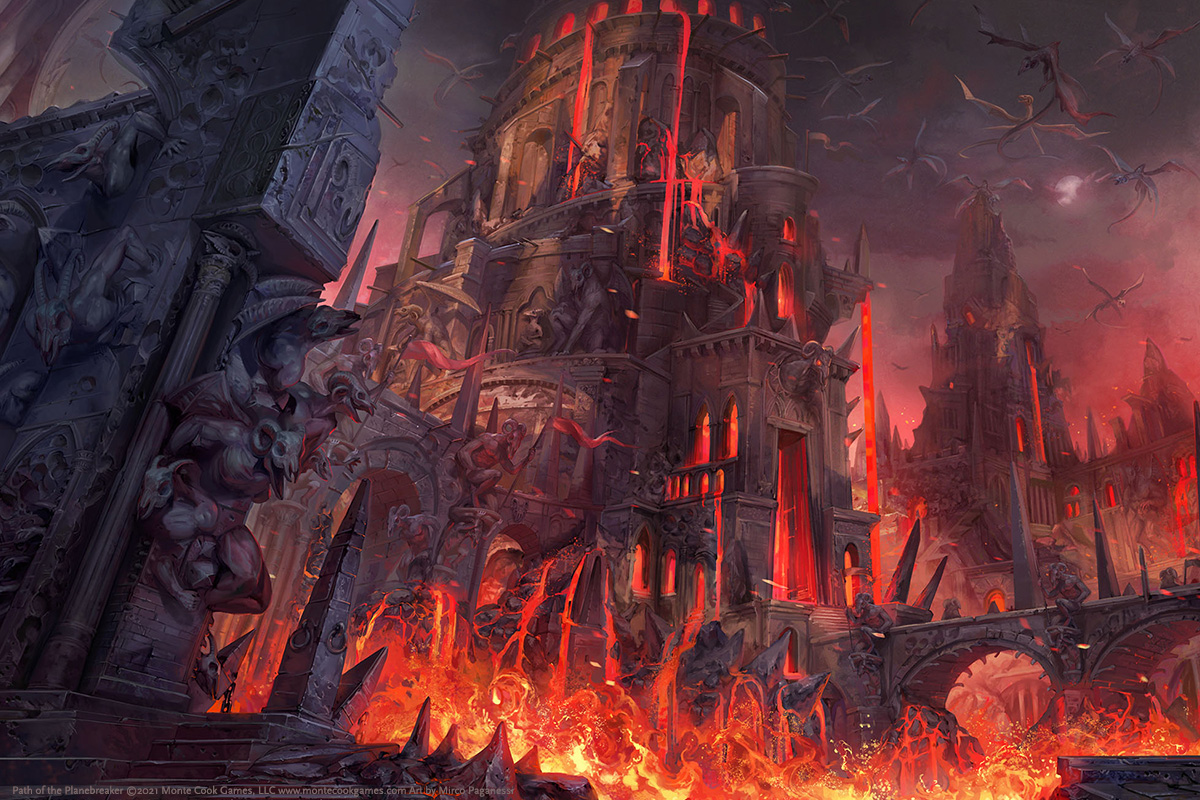
Another location is Etherguard, a city encrusted to the back an ancient being that prowls the Border Ethereal Plane. Those who learn the trick of luring it to them can potentially get a ride across the planes, at least until the great beast shakes them off.
The planar locations are presented so they can be used at the table, requiring a minimum of preparation. In addition, the locations allow a full range of planar exploration for low-, mid-, and high-level characters. Add two that the two full-length adventures, and it’s clear that Path of the Planebreaker is a versatile, GM-friendly sourcebook.
Options for PCs
You can begin your campaign with character species and subclasses from the Planebreaker itself and the many realities it has visited. Inkarnates, for example, are tied to another dimension. Unlike genasi and assimar, that connection isn’t to a specific extraplanar species, but rather to a particular concept, such as uncertainty, belief, or being. Inkarnate are winged, their wings literally formed by glyphs representing this concept—glyphs that power their special abilities.
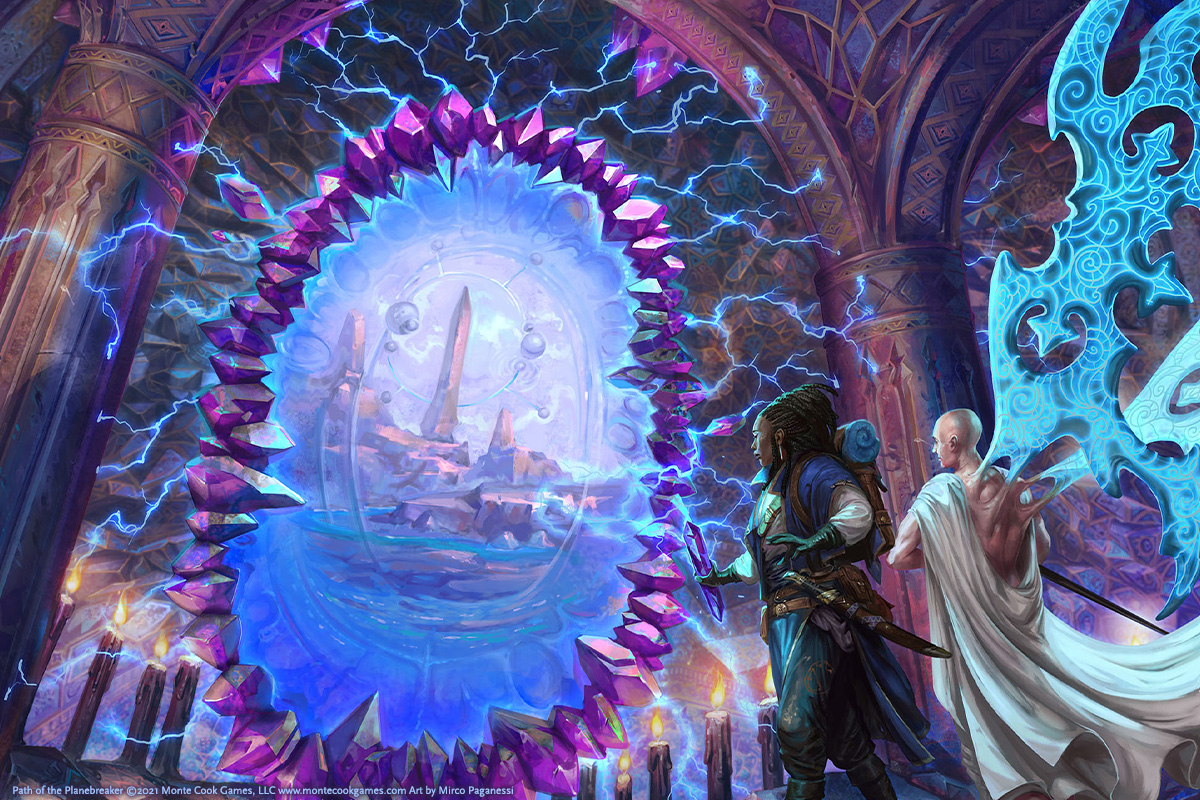
Another new species available for PCs is the traveler, a character born of another species but somehow planetouched at birth. Travelers are marked by a fragment of a cosmic map, etched tattoo-like on their skin. This is a source of power, but also of an unending yearning to explore.
Characters of any species can adopt planar subclasses such as the defacer wizard (who calls upon nightmares to gain terrible powers and an aberrant familiar); the shadow-stitched rogue (who has traded their own shadow for that of an extraplanar creature); the chaos blade fighter (who wields a weapon drawn from elemental chaos); or the multiverse domain cleric (who gain the favor of the multiverse itself).
